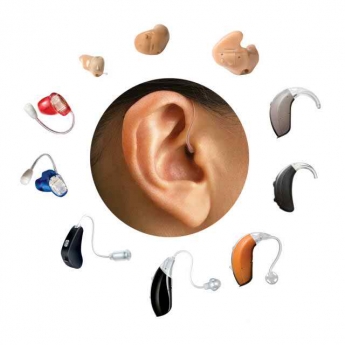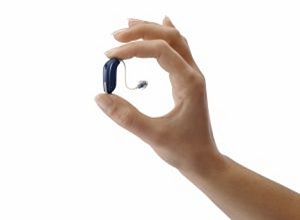Hearing Aids
Appointment Request
Hearing Aids
Hearing Devices and Technology
All Ears Hearing offers a complete range of technology for the prevention and rehabilitation of hearing loss and tinnitus. Our audiologists are qualified and accredited to provide the best hearing solution by selecting, fitting, programming and maintain hearing instruments of all available manufacturers in Australia.

The Hearing Rehabilitation Process
Successful hearing results rely on a number of factors to be considered by the Audiologist before deciding to implement appropriate technology and techniques which may or may not include a hearing aid. This process is an exchange of experiences and knowledge between patient and audiologist.
At All Ears Hearing, we expect that a patient who engages in the hearing rehabilitation process with us is someone who is experiencing difficulties and is serious and ready to take the next step. This person comes to our clinic based on the trust in our expertise and is committed to working with us towards achieving his or her goals.
If you choose to engage in the hearing rehabilitation process at our clinic you will undertake a series of diagnostic hearing and ear function tests to ascertain the origin, characteristics and prognosis of your hearing loss so that your rehabilitation plan can be customized for your profile. The appropriate hearing instrument, when required, will be selected according to your needs and budget.
How to choose a hearing instrument when you really need one?
Our Audiologists have access to all hearing instruments available worldwide. Independent audiologists have hearing instruments retailing rights and buy directly from the manufacturers’ distributors.
There are many different hearing aids which may be suitable for the rehabilitation of any one individual making the selection process very confusing for the consumer. Our preference is to select the most reliable, efficient and economical model for each of our patient’s needs, regardless of brand. If you, however, have a brand preference we are happy to oblige as long as it is suitable for your audiological profile.
After it has been established that a hearing aid should be part of your hearing rehabilitation process we will help you to select the best available options for your budget and encourage you to browse the internet to become familiar with the technology to help you make an informed decision.
Our audiologists are capable of guiding our patients to make the appropriate decision regarding the most suitable device for their needs.
Successful results rely on a number of factors that are considered by the Audiologist:
- The appropriate technology and features of a hearing instrument
- The professional expertise used to select the appropriate device
- Expert programming of the hearing aid to suit the patient’s condition
- Verification of the results and rehabilitation protocols
Choosing the Best Options for Your Situation
You may also choose to buy your hearing aid elsewhere and we will be happy to include the device in your rehabilitation plan. However, we will not be able to honour the warranty, the authenticity and reliability of a product which was not sourced by us.
If you are serious about your hearing and want a successful result we will be happy to provide our itemized list of procedures and fees involved in this process.
You may also wish to browse the internet to become familiar with available hearing aid technology to help you make an informed decision prior to your first consultation with our audiologists.
We provide below a list of reliable websites of reputable hearing aid manufacturers:
- www.bernafon.com
- www.oticon.com
- www.phonak.com
- www.resound.com
- www.sivantos.com
- www.sonici.com.au
- www.starkey.com
- www.unitron.com
- www.widex.com
Types and styles of hearing aids
All digital hearing aids contain at least one microphone to pick up sound, a computer chip that amplifies and processes sound, a speaker that sends the signal to your ear and a battery for power. These components are the “guts” of the hearing aid, and they are packaged into several different styles of hearing aids. When you consult with a hearing care professional, they will consider many factors, provide you with proper hearing aid information and help guide you toward the best hearing aid style for you.
Hearing aids can be classified into two main groups: in-the-ear (ITE) styles and behind-the-ear (BTE) styles. Within each group are several different sizes.
The following hearing aid types are considered ITE styles. Their sizes range from virtually invisible when worn to filling the entire bowl of the ear.
- Invisible-in-the-canal (IIC) and completely-in-the-canal (CIC) hearing aids: IIC and CIC styles are the tiniest hearing aids made. They fit very deeply in the ear canal and are typically fit to help correct mild or moderate hearing losses. Their size and ability to “disappear” when worn depend on the size of the ear canal. Because of their tiny size, they offer high cosmetic appeal for people who desire a discreet solution.
- In-the-canal (ITC) hearing aids: ITC styles sit in the lower portion of the outer ear bowl, making them comfortable and easy to use. Because they are slightly larger than IIC and CIC styles, they have a longer battery life, are easier to handle and can fit a wider range of hearing losses.
- Low profile hearing aids: Low profile styles range from half-shell (HS) designs that fill half the bowl of the outer ear to designs that fill almost the entire outer ear bowl. The size of a low profile style makes it desirable for people with dexterity issues because it is easier to handle than the smaller sizes. Low profile hearing aids are large enough to accommodate helpful features like directional microphones, volume controls and program buttons.
Behind the Ear Style hearing aids
Behind-the-ear styles have enjoyed a resurgence in popularity over the last decade thanks in part to innovations that make the tiniest BTE hearing aids some of the most cosmetically appealing with very thin ear tubes and ear tips that fade discreetly into the ear canal. They have enough physical space to house features for a variety of hearing losses, have ample battery life and are easy to handle.
- Mini BTE hearing aids with slim tubes and tips: Mini BTE styles are designed to hide behind the outer ear and have ultra-thin tubing to discreetly route sound into the ear. This style is so popular that a greater variety of ear tips have become available in order to accommodate a greater degree of hearing loss with the mini BTE.
- Receiver-in-the-ear (RITE) or receiver-in-canal (RIC) hearing aids: RITE and RIC styles have the speaker built into the ear tip instead of the main body of the hearing aid. This allows the speaker of the hearing aid to be positioned closer to the eardrum while the microphone and processor sit in a tiny case behind the ear.
- BTE hearing aids with earmolds: BTE styles that come with earmolds can fit any type of hearing loss, from mild to profound. Their longer shape follows the contour behind the outer ear and can generally house more features, controls and power than any other style of hearing aid.

Our Locations
Mount Waverley
(Pinewood Shopping Village)
- Level 1, 407 Blackburn Road
Mount Waverley, VIC 3149 - 03 98867157
- contact@allearshearing.com.au
- Monday: 9:00am – 5:00 pm
Tuesday: 9:00am – 5:00pm
Wednesday: 9:00am - 5:00pm
Thursday: 9:00am – 5:00 pm
Friday: 9:00am - 5:00pm
Saturday: Only on request. Weekend charges apply
Bentleigh East
- 869 Centre Road
- Bentleigh East , VIC 3165
- 03 98867157
- contact@allearshearing.com.au
- Wednesday : 10:30 am – 5 pm
Yarra Junction
- Yarra Junction Arcade
Shop 4/2456 Warburton Hwy
Yarra Junction, VIC 3797 - 03 98867157
- contact@allearshearing.com.au
- Tuesday: 9:30 am - 5:00 pm
Friday: 9:30 am - 5:00 pm



 View on Map
View on Map